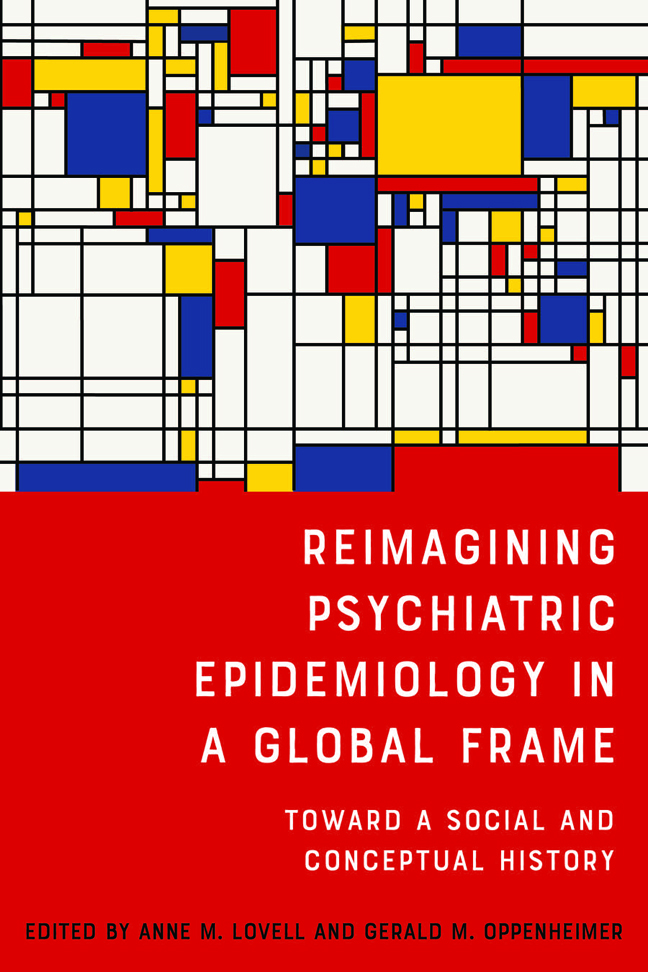Book contents
- Frontmatter
- Contents
- Acknowledgments
- Introduction
- Part One Constructing Mental Health Utopias and Dystopias with Epidemiology
- Part Two Troubling the Boundaries of Psychiatric Epidemiology
- Part Three Decentering Psychiatric Epidemiology in a Postcolonial World
- Selected Bibliography
- Notes on Contributors
- Index
One - From Epidemics of Terror to Landscapes of Fear: Psychiatric Epidemiology and the Psychological Reconstruction of Postwar Britain
Published online by Cambridge University Press: 15 February 2024
- Frontmatter
- Contents
- Acknowledgments
- Introduction
- Part One Constructing Mental Health Utopias and Dystopias with Epidemiology
- Part Two Troubling the Boundaries of Psychiatric Epidemiology
- Part Three Decentering Psychiatric Epidemiology in a Postcolonial World
- Selected Bibliography
- Notes on Contributors
- Index
Summary
In 1917, as World War I was at its height, the gothic novelist Arthur Machen attempted to describe the growing sense of fear and unease that haunted the United Kingdom. He depicted a rootless and invisible emotion, a nameless terror, that moved silently across the land leaving a trail of destruction in its wake. Frightened horses, suicidal farmers, and paralyzed children mapped out the emotion's itinerary across the kingdom. Machen's tale of a transformative horror was rooted in a tradition of gothic literature that had been reinvigorated in the late nineteenth century. However, its central device of an epidemic of fear and its disease-like transmission across the population drew upon different sources: the scientific literature on the pathology of collective emotions that served as a precursor for psychiatric epidemiology in Victorian and Edwardian Britain. Even without its supernatural overtones, this tale seems curiously remote from contemporary psychiatric epidemiology. The distance between the epidemics of feeling described in those early writings and the organization of contemporary practice is striking. Although there was a large literature on the relationship between mental disease and poverty, there is little attempt to map the movements of affect or read transformations of emotion as an index of social or historical change. Instead such epidemics of feeling were read through the psychological concept of suggestion— as a form of primitive and unconscious communication—anchored in the evolutionary frameworks of crowd psychology and the herd instinct.
By the end of World War II this epidemiological understanding of fear had been transformed. Insecurity, terror, and anxiety were no longer seen as capricious forces but instead understood as environmental conditions that could be defeated through political interventions and social planning. Fear was tamed. It moved from being a fickle and fantastic force to become instead an object of political calculation. Indeed in the wake of the war, it would provide the grounds for a new program of social and material reconstruction. As this chapter will partly show, the architects of the welfare state in the 1940s and 1950s saw their task as the engineering of a society in which individuals would be freed from the pathological anxieties of financial insecurity, unemployment, and homelessness. Aneurin Bevan, widely seen as the architect of Britain's National Health Service, complained that modern lives were wrecked by anxiety.
- Type
- Chapter
- Information
- Reimagining Psychiatric Epidemiology in a Global FrameToward a Social and Conceptual History, pp. 55 - 77Publisher: Boydell & BrewerPrint publication year: 2022



